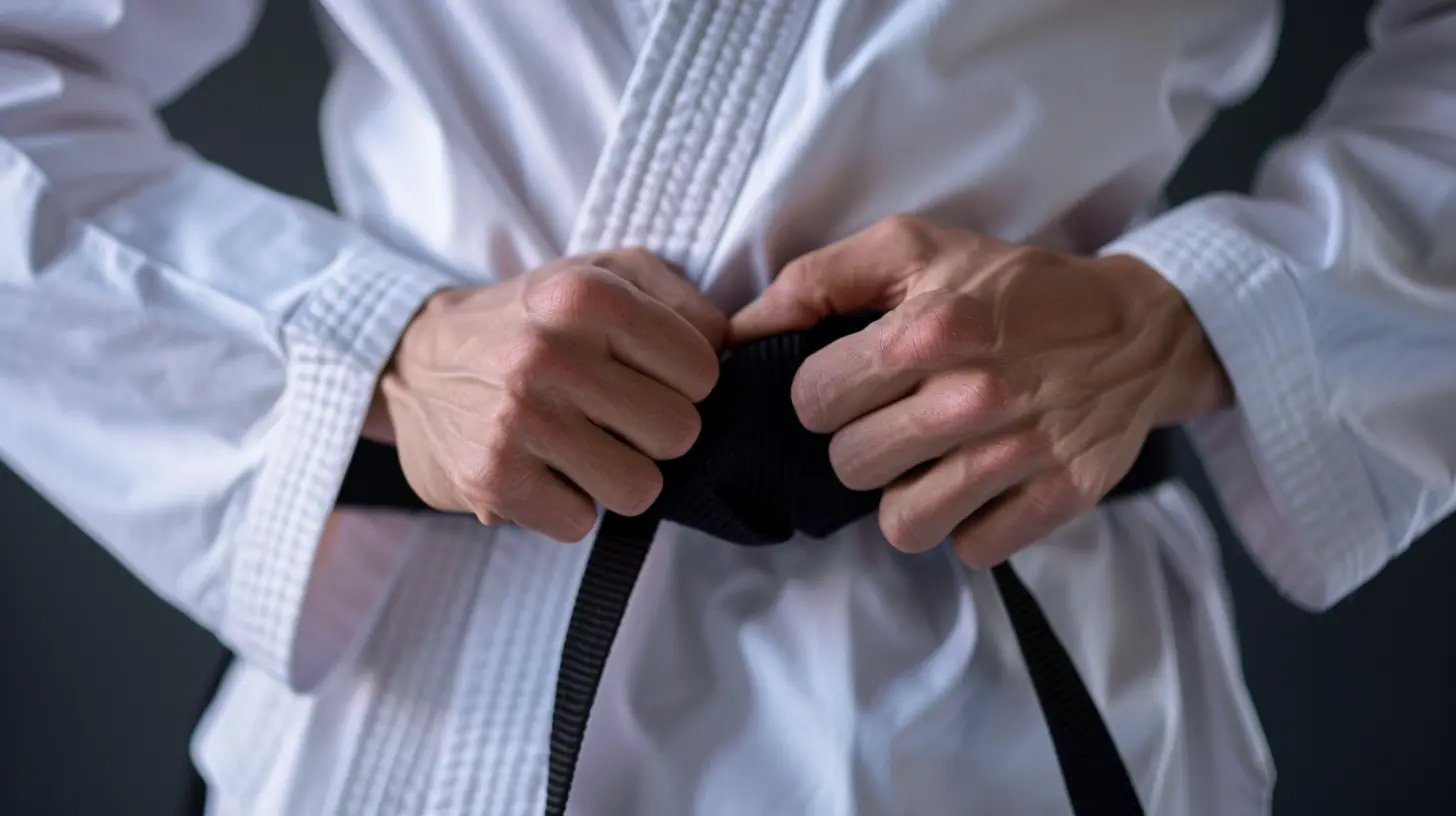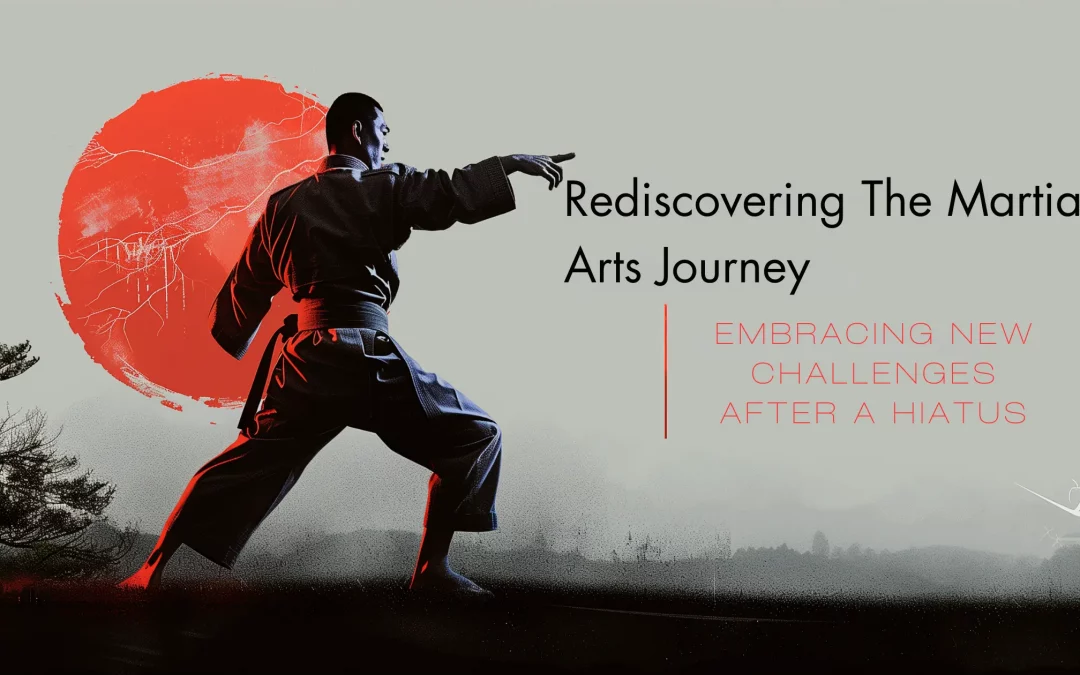Rediscovering the Martial Arts Journey: Embracing New Challenges After a Hiatus

Stepping back onto the mat after an extended break from martial arts can seem like an insurmountable mountain to scale. Self-doubt, frustration, fear – all kinds of challenging emotions can surface and make it difficult to tie that well-worn belt again.
As instructors, we understand firsthand the mental barriers that can hold you back. Whether it was an injury, change in life circumstances, or simply losing motivation over time – walking back through those doors is never easy. But just as martial arts teaches us to transform obstacles into opportunities, this too can be a pivotal moment to rediscover the benefits of training.
In this four-part guide, we’ll break down proven techniques tailored to your return, covering everything from setting fresh goals, preventing injury, pushing beyond plateaus, and keeping inspired on a lifelong martial journey. While it’s important to honor the natural emotions that may arise, remember that our supportive community is behind you every step of the way. By learning from the past and embracing new lessons, you can craft an even more rewarding relationship with your practice.
Let’s reconnect with that inner warrior spirit and evolve together! The mats may be waiting, but so too is the strength and wisdom forged only through patience and perseverance. Wherever you are starting from today, know that here you can rediscover your love. One focused technique at a time, that mountain doesn’t stand a chance.
Coping with Lost Progress and Skills
It’s disheartening realizing the speed, strength, and technical sharpness you once possessed seems dulled or diminished. Skills that were ingrained through endless hours of repetition now feel foreign and unreachable. Rather than focus on what’s faded, shift to appreciate what remains. Rebuilding your foundation and enhancing awareness of proper form can ultimately improve overall quality for the long run.
Be specific by taking inventory – document areas of most regression like stances, combinations, sparring. This clarity helps tailor training to target priority areas first before expanding abilities at your own measured pace. Break larger goals around skill restoration into measurable weekly wins to stay encouraged by progress.
Most importantly, release attachment to your peak physical condition by embracing longer-term aspirations related to personal growth and community impact. Setbacks are never as permanent as they may initially seem if you persist with patience.
Overcoming Doubts, Frustrations and Impatience
Frustration and creeping self-doubt from comparing your current skill level to past capabilities can quickly snowball if left unchecked. Notice when judgments around yourself or training surface and intentionally redirect energy into the present moment techniques. Breathe deeply while holding stances – feel stability strengthening through your foundation again. Visualize executing combinations fluidly like second nature.
Celebrate mini wins like holding a plank 10 seconds longer or nailing a specific tricky kick combination. Have compassion for the natural emotions that frustration triggers too – perhaps fears of never regaining abilities or wasting previous effort and time invested. Acknowledge these feelings, relating instead of resisting. As this psychology article explores, experiencing setbacks does not necessarily impair future performance if emotional responses are handled effectively. In fact, negative emotions, when approached constructively, can actually fuel motivation and achievement going forward.
Then renew your personal reasons for training, connecting to meaning behind each repetition, kata, or drill. The depth of wisdom and breakthroughs waiting ahead truly outweigh temporary setbacks along the way. Trust that with consistent effort and an open spirit, you will continue progressing on a martial arts journey without end.
Creating a Foundation for Success

Restarting training after a long break is the perfect opportunity to set a fresh perspective anchored in your current reality. Rather than overly attach to previous metrics, celebrate the chance to establish new goals aligned with the person you are today.
Establishing Fresh, Achievable Goals
Ask yourself – why am I really coming back to martial arts right now? Get clarity on your internal motivations separate from external achievement markers. Connect to emotions evoked – is it rediscovering joy? Building connections with a community? Restoring mental and physical health?
Use the deeper ‘why’ to craft tangible process-oriented goals around consistency, personal growth, wellbeing. Examples include: attending classes twice weekly for 3 months, journaling after each session, recording video to check improvement monthly. Keep your own pace at the center rather than comparisons with others. Small, repeatable wins pave the road back more sustainably than rigid, distant markers ever could.
Adopting a Beginner’s Mindset and Letting Go of Ego
The beauty of walking back in as a beginner is that you hold no assumptions on what you ‘should’ be able to do. Each technique can be learned with fresh eyes and felt fully in each muscle pattern. Allow yourself to fumble, laugh, and explore self-expression through unpolished movements again. Here breakthroughs hide in plain sight.
As highlighted in this article on developing resilience, focusing only on what you can control and viewing setbacks as temporary rather than permanent is key. Reset expectations and dedicate to daily, incremental improvements through a beginner’s gaze. Suspend judgments around current versus past abilities. Accept where your fitness level stands today without criticism. Let go of unhelpful ego stories drawing false correlations about skill with self-worth or deservingness of respect from others.
Instead take pride in having the courage to show up vulnerable, learn openly, and lean into community support. Progress flows more freely when unblocked by the inherent limitations of ego. Here patience and compassion serve you well.
Strategies for Training Smarter
Approach your comeback with care and wisdom. Pushing too intensely before building an appropriate foundation risks not only plateauing too soon, but also emotional and physical burnout. Implement these techniques early on to evolve more sustainably.
Easing Back Into Things Through Modifying Intensity
Gauge effort levels across training and adjust the intensity accordingly. Just because you could hold a stance for 3 minutes years ago doesn’t mean that is sensible to expect today without proper progression. Start with 30-60 second holds, self-assessing fatigue and form. Only extend time once execution feels solid. Apply this principle before advancing combinations number/complexity too.
Listen closely to your body and allow sufficient rest between sessions. It is better to leave desiring more than risk overexertion injuries through prematurely surpassing reasonable limits. Trust you will rebuild in due time without unnecessary suffering.
Preventing Injury When Returning After a Layoff
Injuries from past layoffs or otherwise can easily resurface if you jump recklessly back into full-contact sparring or advanced techniques. Begin by thoroughly stretching and slowly strengthening vulnerable areas. Wrap wrists/ankles early on for extra support even in basic drills.
Gradually layer in more movement complexity week-over-week. Isolate higher-risk techniques like takedowns independently before blending into fluid sequences with others. Spar at half speed observing mechanics. Better to swallow pride arrogantly sprinting ahead than to sideline yourself through preventable reaggravation of old wounds.
Breaking Through Plateaus in Progress

After consistently training for some weeks, you will inevitably hit plateaus – periods where perceived skill gains stall despite continued efforts. View these phases as a martial arts training rite of passage rather than failure or futility of progress.
Plateaus signify your body and mind integrating current lessons to support more advanced techniques down the line. Breakthroughs follow plateaus, but formalize your own strategies to navigate them positively. Examples include cross-training, modifying volume/intensity, and filming your forms for outside feedback. Most powerfully, reconnect to deeper motivations on your martial arts journey during plateaus. Surface-level goals often prove insufficient to push through, whereas aligning training to your core values and sense of meaning can unlock untapped potential.
Trust the process and know that even subtle yet consistent daily progress over months will accumulate into vastly expanding horizons of possibility. What may feel like insurmountable barriers today in time reveal themselves as stepping stones to new heights.
Staying Motivated Through Conscious Reflection

The path of progress in martial arts takes patience and dedication through all sorts of terrains. As the thrill of beginner gains fades and challenges emerge, reflecting intentionally on your journey governs sustaining motivation over the long-haul.
Celebrating Small Wins and Milestones
Be deliberate in acknowledging and appreciating all measures of progress made, however slight they may seem day-to-day. Did you complete 5 more roundhouse kick reps without losing balance? Finally nail that intricate arm lock combination flow while sparring? Write down or share these micro wins. Over time, these tiny steps transform into giant leaps ahead.
Likewise, note bigger milestones met – attending training consistently for a month straight again after years away or finally nailing your first full sparring round without gassing out. However humble it appears from the outside, validate inner progress to yourself. You deserve to recognize how far you have come already.
Regular Self-Evaluation and Tracking Progress
Carve out time every 4-6 weeks to consciously step back evaluating your skills gained, areas to focus training, and mapping goals for the next phase ahead. Be honest yet kind to yourself taking stock of the progress made so far. Film your recent technique execution and compare it to previous recordings noting concrete improvements.
Give testimony to the personal developments made visible along the external measurements – like courage to face fears, vulnerability in asking for help, and willingness to try and fail and try again. The internal muscle gains often outweigh physical ones. Chart mini goals met while readjusting bigger milestone markers on the horizon.
Staying accountable to self-reflection prevents losing sight of progress made amidst the incremental day-to-day training. Give yourself credit for showing up through discomfort which already makes you a warrior. Then write the next chapter with that wise perspective informing positive, sustaining action ahead.

